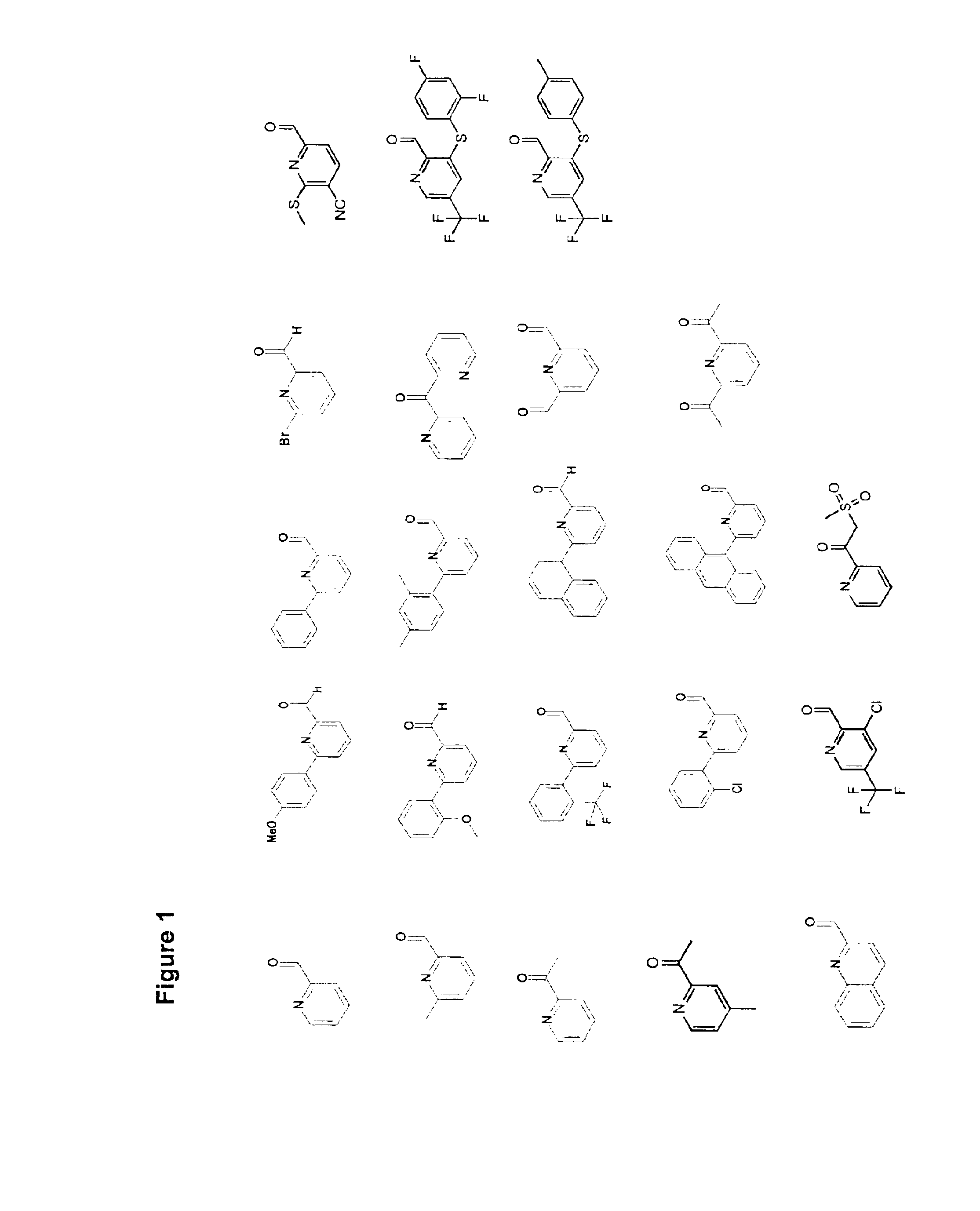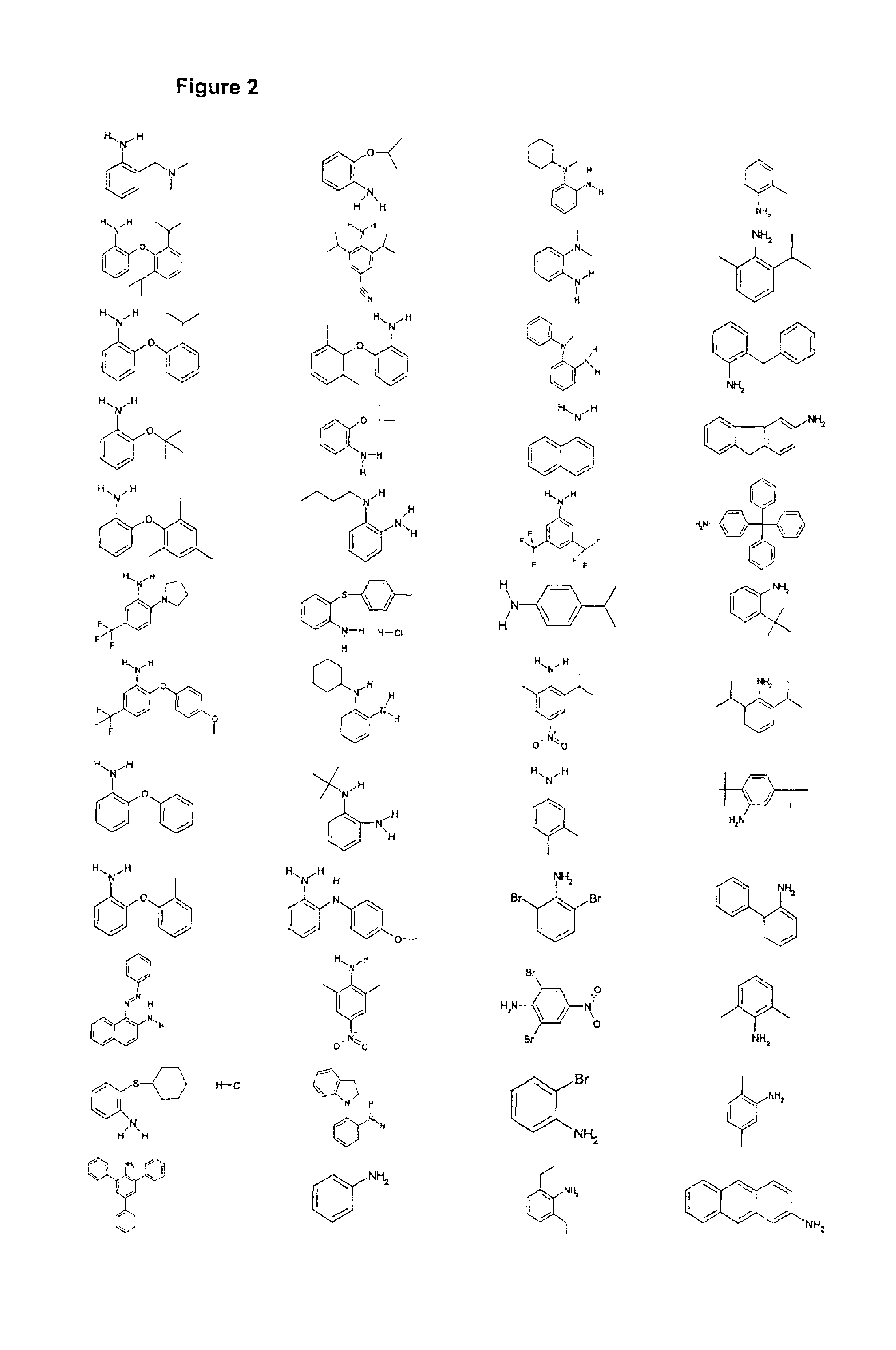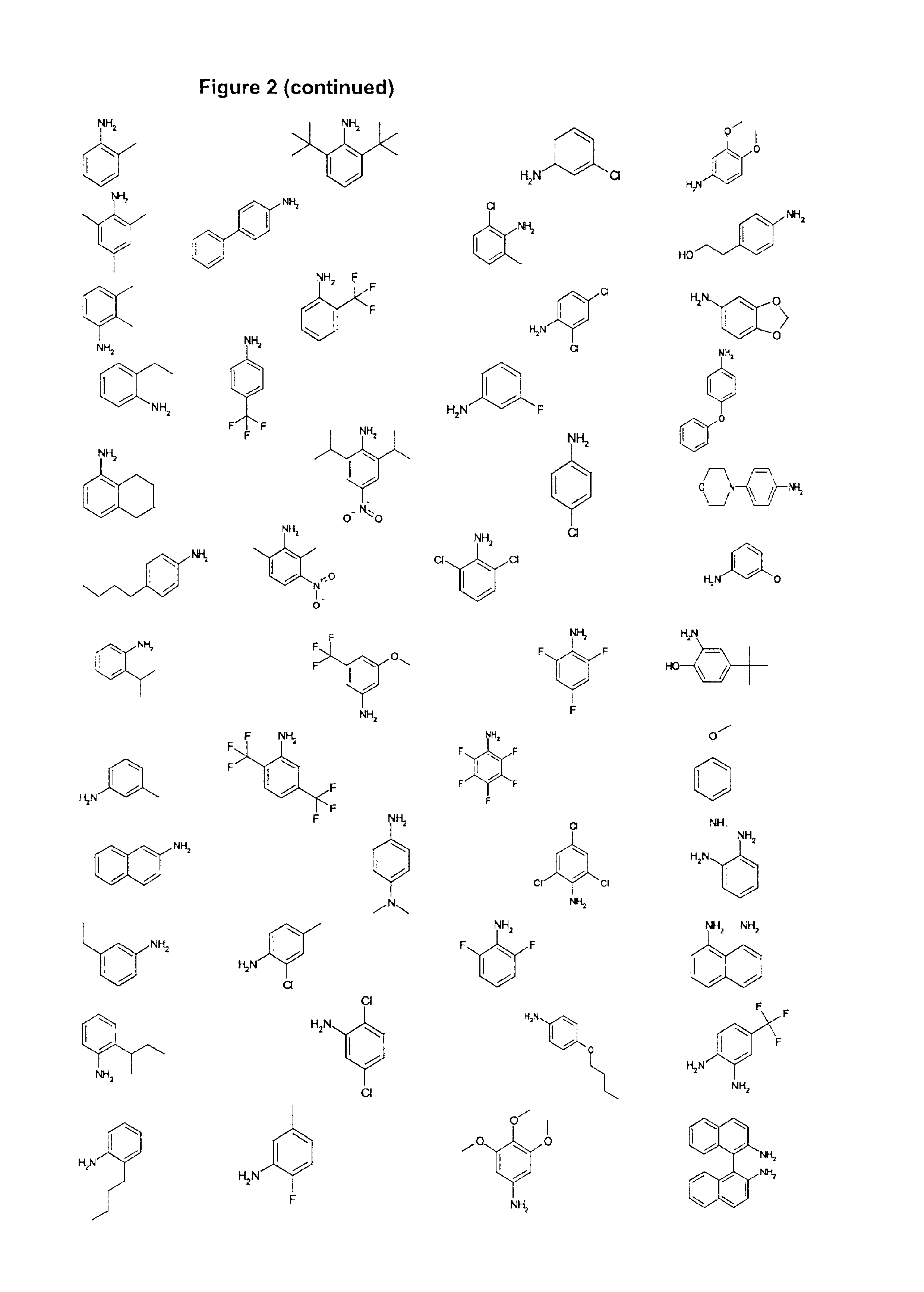Substituted pyridyl amine complexes, and catalysts
- Summary
- Abstract
- Description
- Claims
- Application Information
AI Technical Summary
Benefits of technology
Problems solved by technology
Method used
Image
Examples
example 1
Synthesis of Ligand
[0186]
Both parts to this example make the same ligand, shown above, with and without the presence of complexing agent.
Part A: Synthesis Without MgBr2 Complexation:
[0187]To a solution of 2-pyridyl-N-mesitylimine (224 mg, 1 mmol) in 5 mL of anhydrous, degassed Et2O cooled to −30° C.wasaddedunderargonasolutionofphenyllithium (833 μL of 1.8 M in cyclohexane, 1.5 mmol). After warming to room temperature over 1 hour, the solution was stirred for a further 12 hours. The reaction was then quenched with aqueous NH4Cl, the layers were separated, and the organic layer was dried over Na2SO4. GC-MS analysis showed a mixture of the C- and N-alkylated products. The C- to N-alkylation ratio was 4:1 as determined by 1H NMR.
Part B: Synthesis with MgBr2 Complexation:
[0188]To a stirred slurry of powdered MgBr2 (92 mg, 0.5 mmol) in 1 mL of anhydrous, degassed Et2O was added under argon a solution of 2-pyridy-N-mesitylimine (224 mg, 1 mmol) in 5 mL of Et2O. The mixture was stirred for ...
examples 2-3
[0189]Preparation of the polymerization reactor prior to injection of catalyst composition; Ethylene-1-octene Polymerizations: A pre-weighed glass vial insert and disposable stirring paddle were fitted to each reaction vessel of the reactor. The reactor was then closed, 0.100 mL of a 0.02 M solution of triisobutylaluminium (TIBA) in toluene, then 2.375 mL of toluene, then 0.250 mL of 1-octene, then 2.375 mL of toluene, were injected into each pressure reaction vessel through a valve. The temperature was then set to 130° C., and the toluene / 1-octene mixture was exposed to ethylene gas at 100 psi pressure. An ethylene pressure of 100 psi in the pressure cell and the temperature setting were maintained, using computer control, until the end of the polymerization experiment.
[0190]Preparation of the polymerization reactor prior to injection of catalyst composition; Ethylene-Styrene Polymerizations: A pre-weighed glass vial insert and disposable stirring paddle were fitted to each reactio...
example 2
Ethylene-1-octene Polymerizations Using Hafnium-Ligand Compositions
[0195]Preparation of Stock Solutions: The “group 13 reagent solution” is a 0.20 M solution of triisobutylaluminium (TIBA). The “activator solution” is a 10 mM solution of N,N′-dimethylanilinium terakis(pentafluorophenyl)borate in toluene (160 mg in 20 mL toluene), heated to approximately 85° C. to fully dissolve the N,N′-dimethylanilinium tetrakis(pentafluorophenyl)borate.
[0196]In situ preparation of Hafnium-ligand compositions: Stock solutions were prepared as follows: The “metal precursor solution” is a 25 mM solution of Hf(CH2C6H5)4 in toluene (34 mg in 2.50 mL toluene; HfCl4 was purchased from Strem Chemicals, Inc., Newburyport, Mass. (99.95%+Hf) and modified with 4 equivalents of benzyl Gringard at −30° C. in ether). The “ligand solutions” are a 25 mM solution the respective ligands in toluene, prepared in an array of 1 mL glass vials by adding 0.060 mL of toluene to 1.5 μmol of the ligand in a 1 mL glass vial. ...
PUM
| Property | Measurement | Unit |
|---|---|---|
| Volume | aaaaa | aaaaa |
| Temperature | aaaaa | aaaaa |
| Fraction | aaaaa | aaaaa |
Abstract
Description
Claims
Application Information
 Login to View More
Login to View More - R&D
- Intellectual Property
- Life Sciences
- Materials
- Tech Scout
- Unparalleled Data Quality
- Higher Quality Content
- 60% Fewer Hallucinations
Browse by: Latest US Patents, China's latest patents, Technical Efficacy Thesaurus, Application Domain, Technology Topic, Popular Technical Reports.
© 2025 PatSnap. All rights reserved.Legal|Privacy policy|Modern Slavery Act Transparency Statement|Sitemap|About US| Contact US: help@patsnap.com



